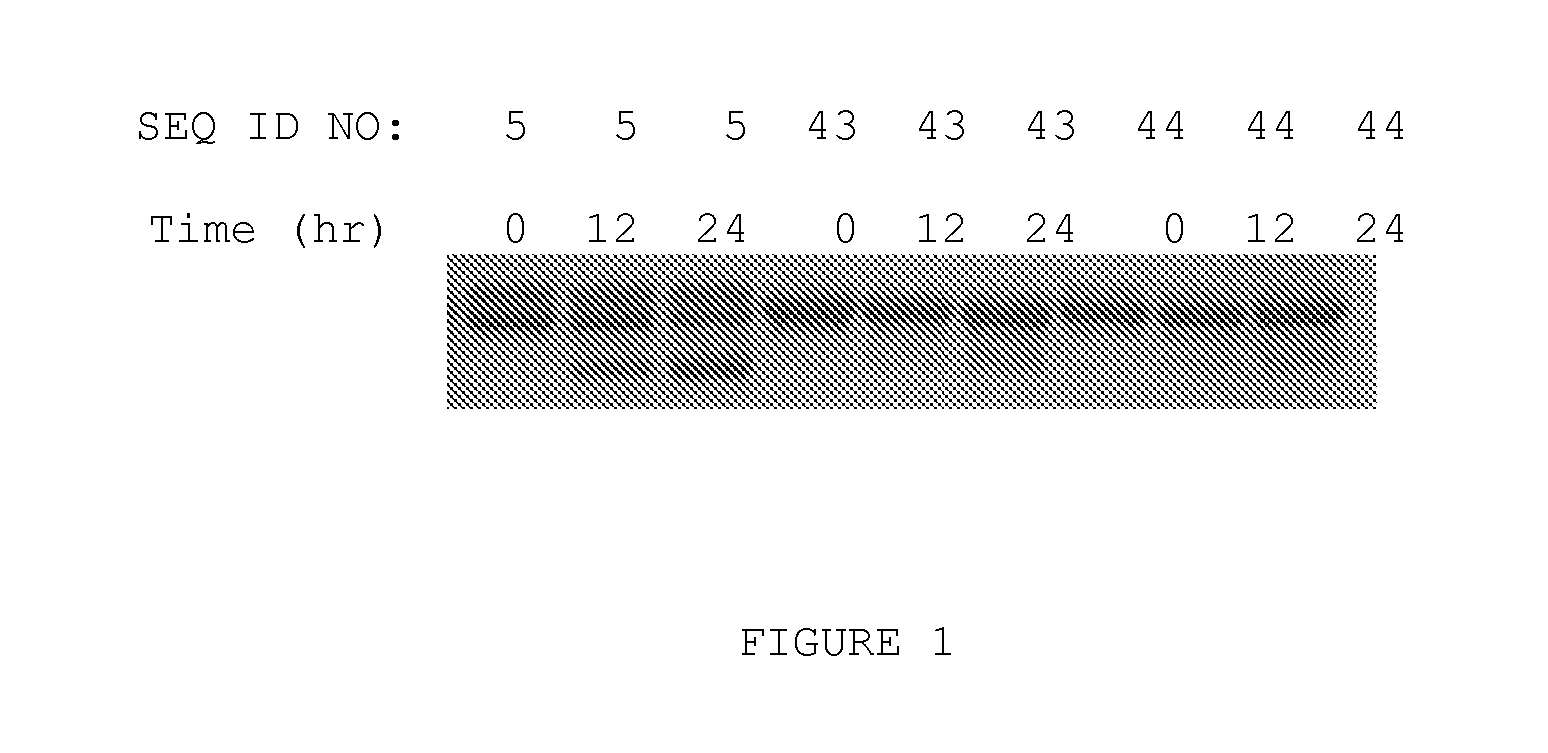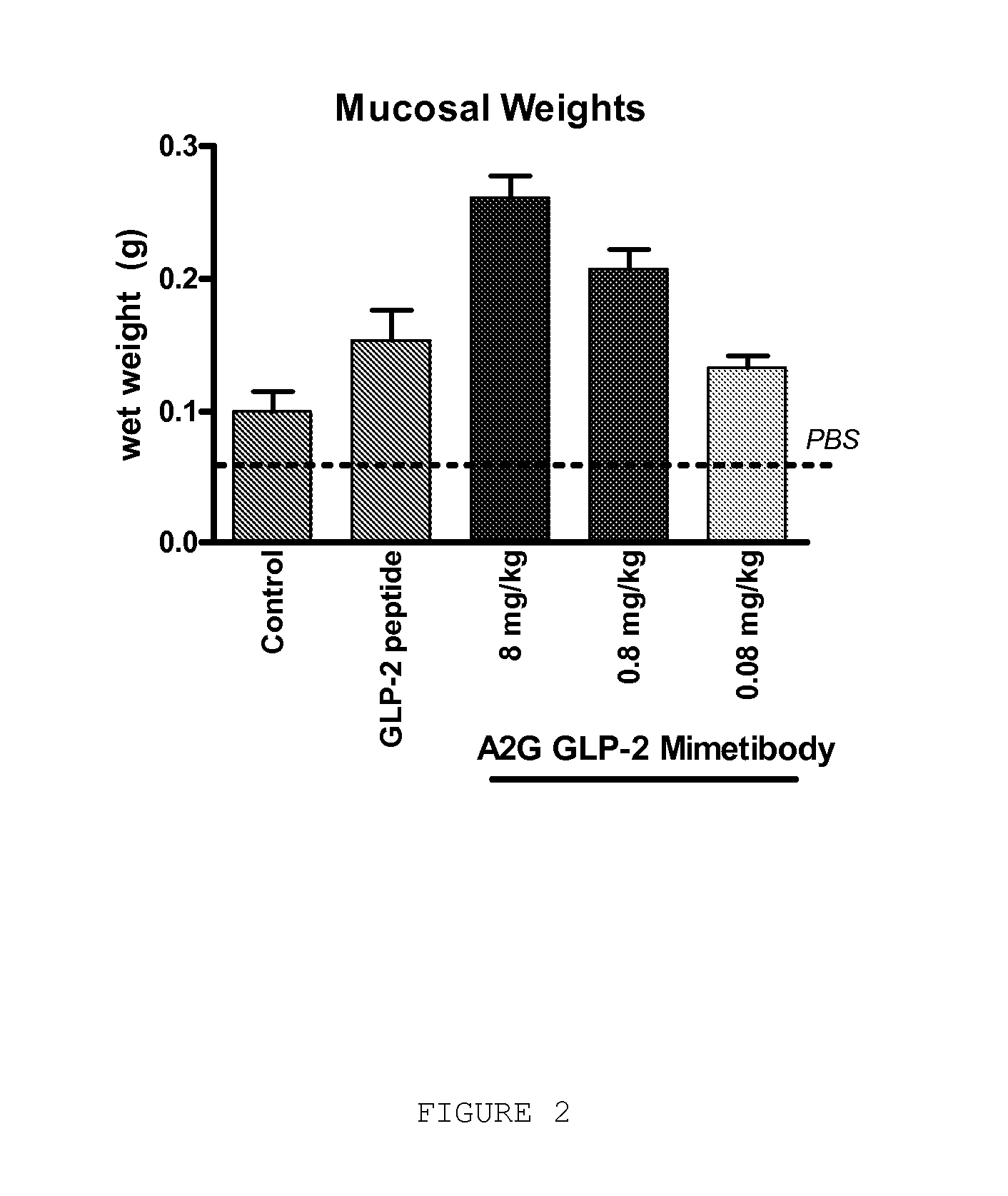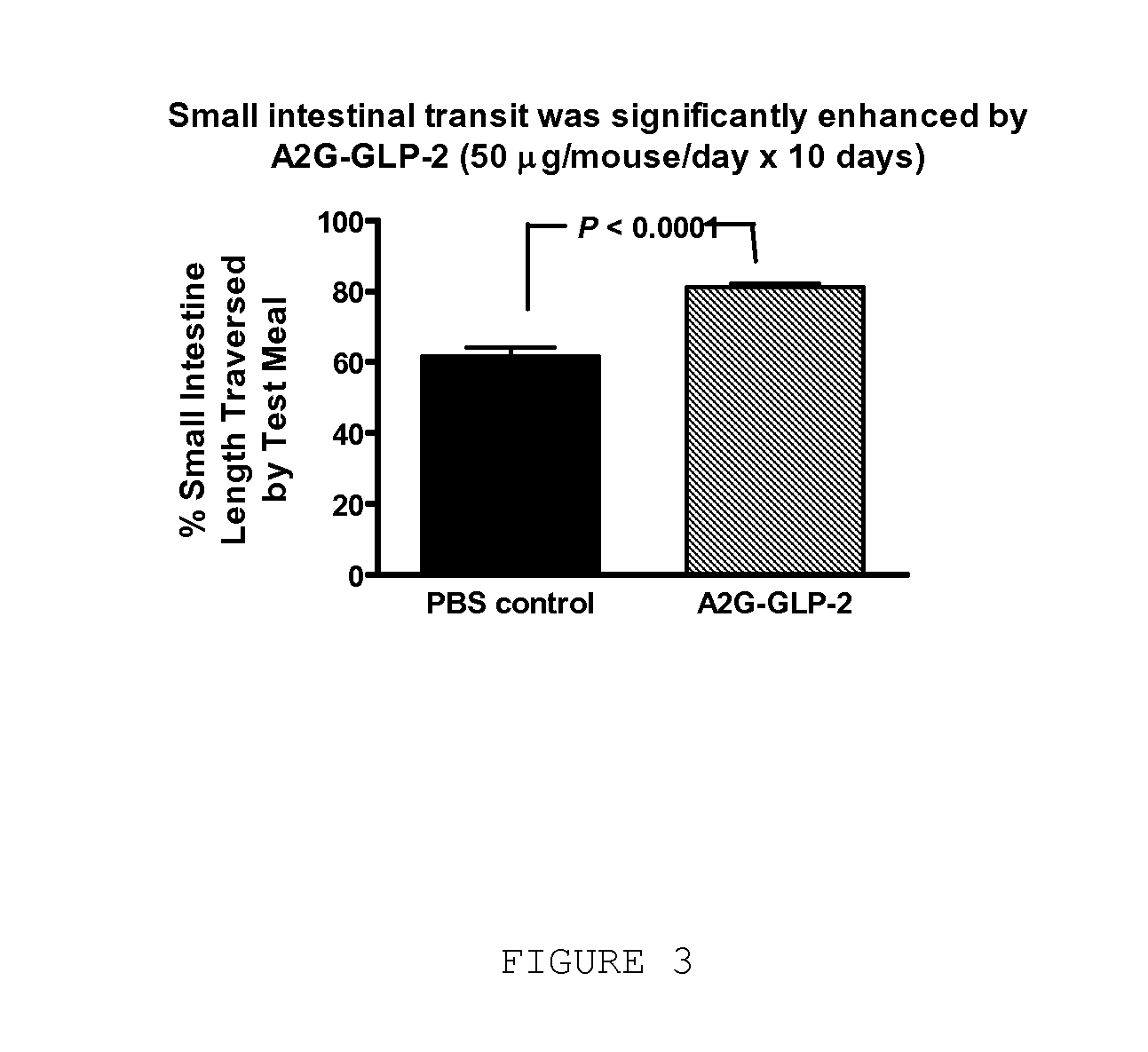GLP-2 Mimetibodies, Polypeptides, Compositions, Methods and Uses
a technology of glp-2 and mimetibodies, applied in the field of mammalian glp2 polypeptides and mimetibodies, can solve the problems of prolonged patient discomfort, toxic side effects, dose limitation, etc., and achieve the effects of reducing symptoms, preventing, and reducing symptoms
- Summary
- Abstract
- Description
- Claims
- Application Information
AI Technical Summary
Benefits of technology
Problems solved by technology
Method used
Image
Examples
example 1
Cloning, Expression and Purification of GLP-2 Mimetibodies in Mammalian Cells
[0083] Nucleic acid sequence encoding A2S GLP-2 was generated in a 2-step PCR amplification. The first round amplification was performed using forward primer 5′-CCAAAGTATACAGGCGCATAGCGATGGTTCTTTCTCTGATGAGATGAACACCATTCTTG-3′ (SEQ ID NO: 37) and reverse primer 5′-TTGGTCTGAATCAACCAGTTTATAAAGTCTCGAGCGGCAAGATTATCAAGAATGGTGTTCATCTC-3′ (SEQ ID NO: 38). The melting, annealing and extension temperature were set at 96° C., 48° C., and 72° C., respectively. Three cycles of reactions were carried out.
[0084] For the second round amplification, the forward primer included a NotI restriction enzyme recognition site and the reverse primers included a BamHI site. The sequence of the forward primer is 5′-TTTGCGGCCGCCCAAAGTATACAGGCG-3′ (SEQ ID NO: 39) and reverse primer 5′-AAAGGATCCGTCAGTGATTTTGGTCTGAATCAACCAG-3′ (SEQ ID NO: 40). The melting, annealing and extension temperature were set at 96° C., 48° C., and 60° C., respec...
example 2
cAMP Expression Assay
[0089] In order to evaluate the in vitro activities of the GLP-2 mimetibodies, a cAMP expression assay was developed. To achieve this goal, a clonal cell line expressing a mutated human GLP-2R was generated by transfecting HEK 293E cells. The mutated human GLP-2R differs from the wild-type human GLP-2R (SEQ ID NO: 35) at three amino acid positions within the C-terminal intracellular region (SEQ ID NO: 36). GLP-2 peptide stimulated cAMP expression in this cell line and the stimulation was specific, as a control peptide did not stimulate cAMP expression.
[0090] A2S and A2G IgG4 GLP-2 mimetibodies were compared with the corresponding GLP-2 peptides (A2S and A2G) for their ability to stimulate cAMP expression in the recombinant cell line. Briefly, cells were incubated with individual GLP-2 mimetibody or GLP-2 peptide for 30 minutes. The cAMP expression was quantitated using the cAMP Direct Screen System (Cat. No. CSD 200, Applied Biosystems, Bedford, Mass.). The EC...
example 3
GLP-2 Mimetibody Variants
[0091] To investigate the effect of linker length on the GLP-2 mimetibody, different constructs with various linker lengths were generated. The sequences of the core region are shown below in Table 1.
[0092] These variants were expressed transiently in HEK 293 cells, purified and analyzed by SDS-PAGE. Analysis by SEC-SLS showed a peak with a molecular weight of 65-70 kDa corresponding to the monomer of the mimetibodies in addition to one corresponding to the dimer of the mimetibodies. It was observed that the longer the linker length, the higher the proportion of the monomer population.
[0093] Linker length and V2 region variants were tested in the cAMP expression assay described in Example 2. The data demonstrated that the activities of the GLP-2 mimetibodies, as measured by EC50, directly correlated with the linker length, i.e., mimetibodies with longer linkers have higher activity (Table 1).
TABLE 1Core amino acid sequences and EC50 of GLP-2mimetibodies...
PUM
| Property | Measurement | Unit |
|---|---|---|
| pH | aaaaa | aaaaa |
| molecular weight | aaaaa | aaaaa |
| distance | aaaaa | aaaaa |
Abstract
Description
Claims
Application Information
 Login to View More
Login to View More - R&D
- Intellectual Property
- Life Sciences
- Materials
- Tech Scout
- Unparalleled Data Quality
- Higher Quality Content
- 60% Fewer Hallucinations
Browse by: Latest US Patents, China's latest patents, Technical Efficacy Thesaurus, Application Domain, Technology Topic, Popular Technical Reports.
© 2025 PatSnap. All rights reserved.Legal|Privacy policy|Modern Slavery Act Transparency Statement|Sitemap|About US| Contact US: help@patsnap.com



